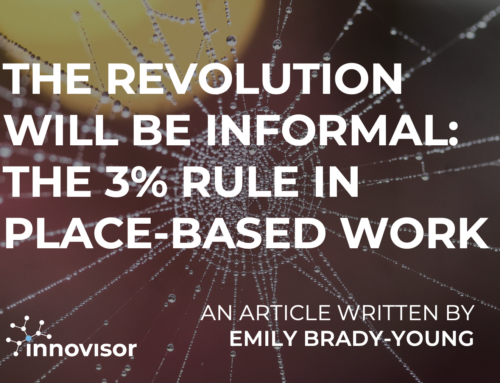Cross-Organizational Innovation in Energy Transition
Enabled by the Triple Helix Model
They all wanted the same thing: innovation to drive the energy transition forward. The stakes were high, and time was not on their side.
This was not just a technical challenge—it was a human one.
Three distinct actors had come together in one regional alliance:
- Universities
- Public organizations
- Private organizations
All well-known. All powerful in their own right. All aligned on paper.
But alignment on paper isn’t the same as alignment in practice.
The Context: The Energy Transition Consortium
They had formed a new consortium—based on what some would call the Triple Helix Model—each appointing representatives to a shared table.
Seven people in total.
Three of them came from private organizations – but from three very different organizations. One was an oil & gas player pivoting to renewables. Another was a global engineering consultancy. The third, a progressive energy company tackling emissions.
The universities were equally diverse. One focused on engineering, prototyping and testing. The other leaned more toward theoretical and research-based approaches.
The public organizations brought in both local and national representation.
Their goal was clear: to create breakthrough innovation within renewable energy.
These breakthrough innovations needed to translate into business opportunities that could accelerate the energy transition through cross-organizational collaboration – a space where transformative ideas could evolve in scalable ventures.
But challenges quickly surfaced.
The Challenge: From Alignment to Fragmentation
When the seven sat together, collaboration came naturally. They were sharp. Focused. Ambitious. Goals aligned. Urgency shared.
But when they returned to their home organizations, everything shifted.
Competing priorities emerged. Leaders interpreted strategies differently. Silos reasserted themselves. The speed of private organizations clashed with the pace of universities. Funding was uncertain, and timing misaligned. All these challenges created pressure and hesitation that slowed progress.
The coordination that had felt seamless in the room now felt like sand was thrown in the engine. Their intentions were not enough.

The Shift: Three Critical Changes
From Hidden Networks to Visible Community
Instead of forcing alignment through structure and process, the consortium took a different approach.
They started mapping the real networks inside and between their organization—the ones who were not on the radar and were a blind spot to them. They identified formal power players, informal influential voices, and go-to experts on energy transition.
These were the people who mattered. The ones who could make or break momentum.
From flying blind to Smooth Sailing
They engaged these stakeholders. Not with orders or slide decks, but with a story co-created alongside them.
A compelling narrative that made it clear: this was not just about building a hub. It was about ensuring each organization could thrive in the new energy era.
From the Center to the System
The original seven realized they could not control the innovation from the center. If it was to succeed, it had to live in the broader community or system.
They shifted from controlling to coordinating. From managing to enabling.
Armed with insights into the informal networks, they stopped being the hub, and started building one:
- They empowered those key players to take the lead informally.
- They facilitated connections.
- They surfaced blind spots.
- They translated shared ambition into shared action.
The Result: Ecosystem Enablement = Innovation
This new approach of ecosystem enablement allowed them to tackle multiple cross-organizational collaboration issues at once:
- They created aligned goals:
not by mandate, but by co-creation. - They built trust:
not by pushing unity, but by encouraging transparency.
- They improved communication:
not by centralizing it, but by weaving it into the natural flow of conversations already happening.
What began as a well-meaning table of seven evolved into a movement where innovation happened. Innovation did not anymore only depend on seven people in a room. It flowed across the community or system.
And that was the real transition: not just energy, but how organizations collaborate to build the future.
Did you know...
 that in a May 2025 poll conducted among members of the Organizational Network Club, 65% identified misaligned goals as the #1 barrier to successful cross-organizational collaboration. Trust gaps and communication breakdowns followed closely behind.
that in a May 2025 poll conducted among members of the Organizational Network Club, 65% identified misaligned goals as the #1 barrier to successful cross-organizational collaboration. Trust gaps and communication breakdowns followed closely behind.
Learn more about this and all other Organizational Network Club conversations by joining as a member: Join the Organizational Network Club








